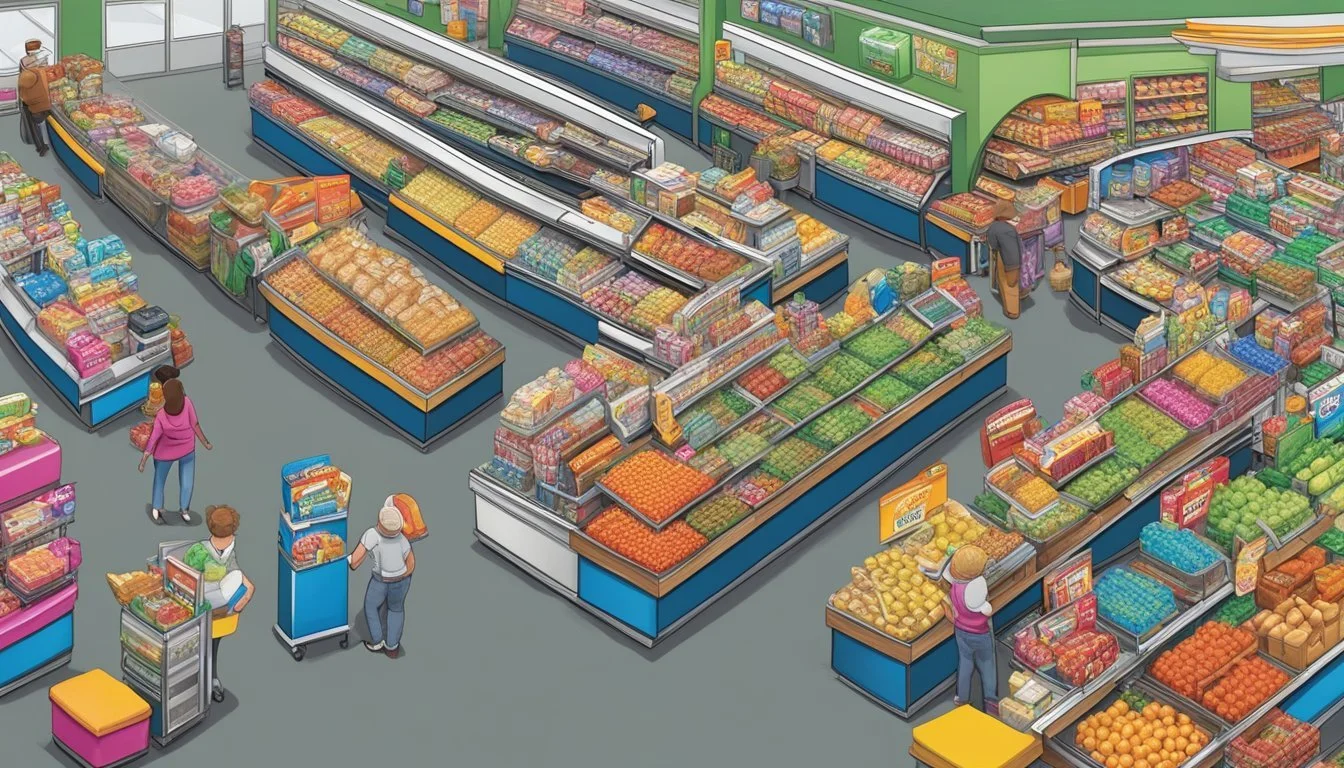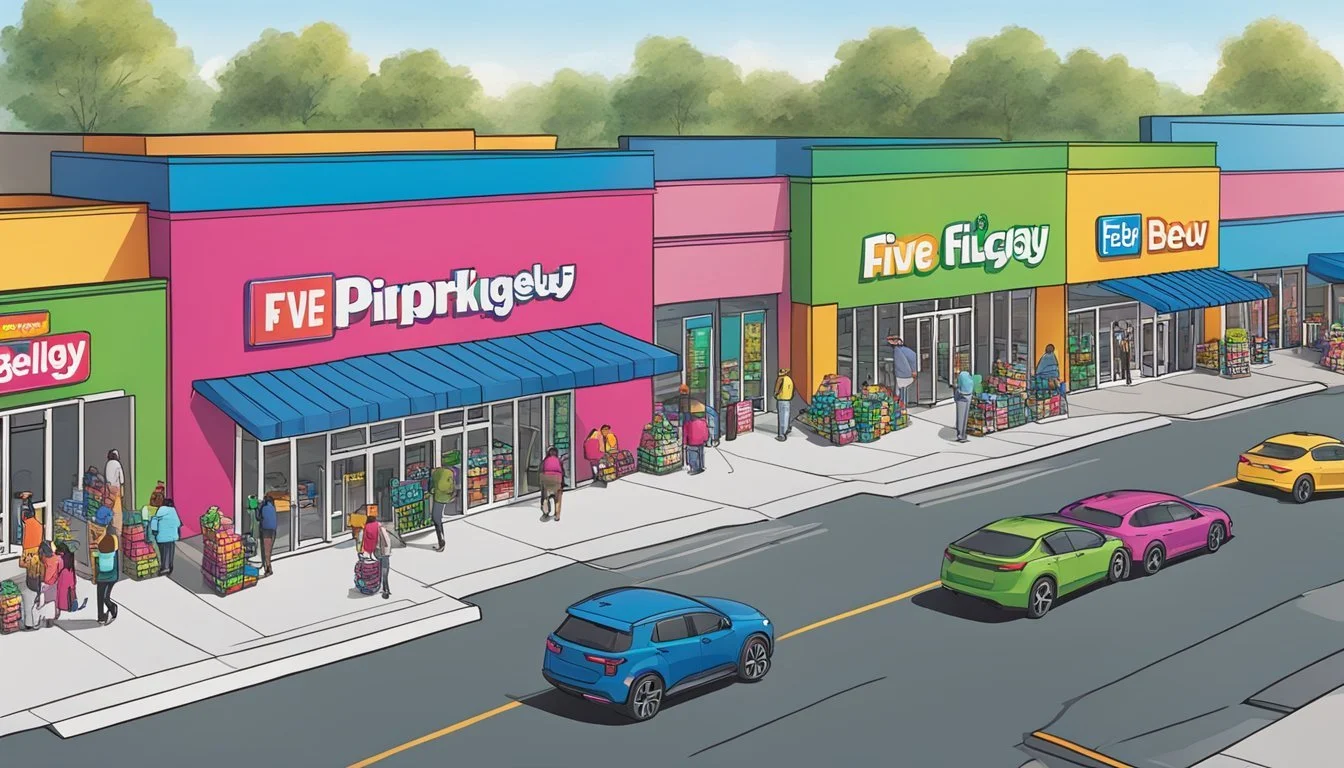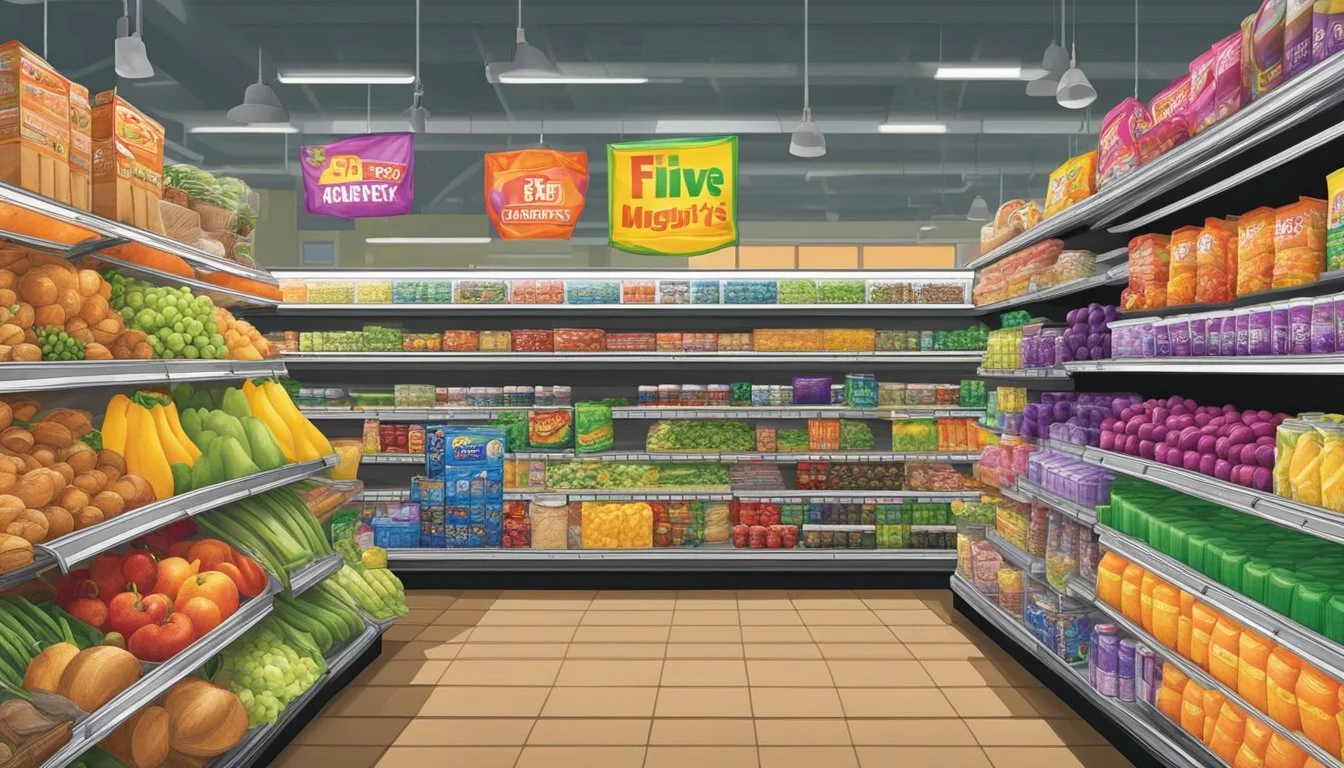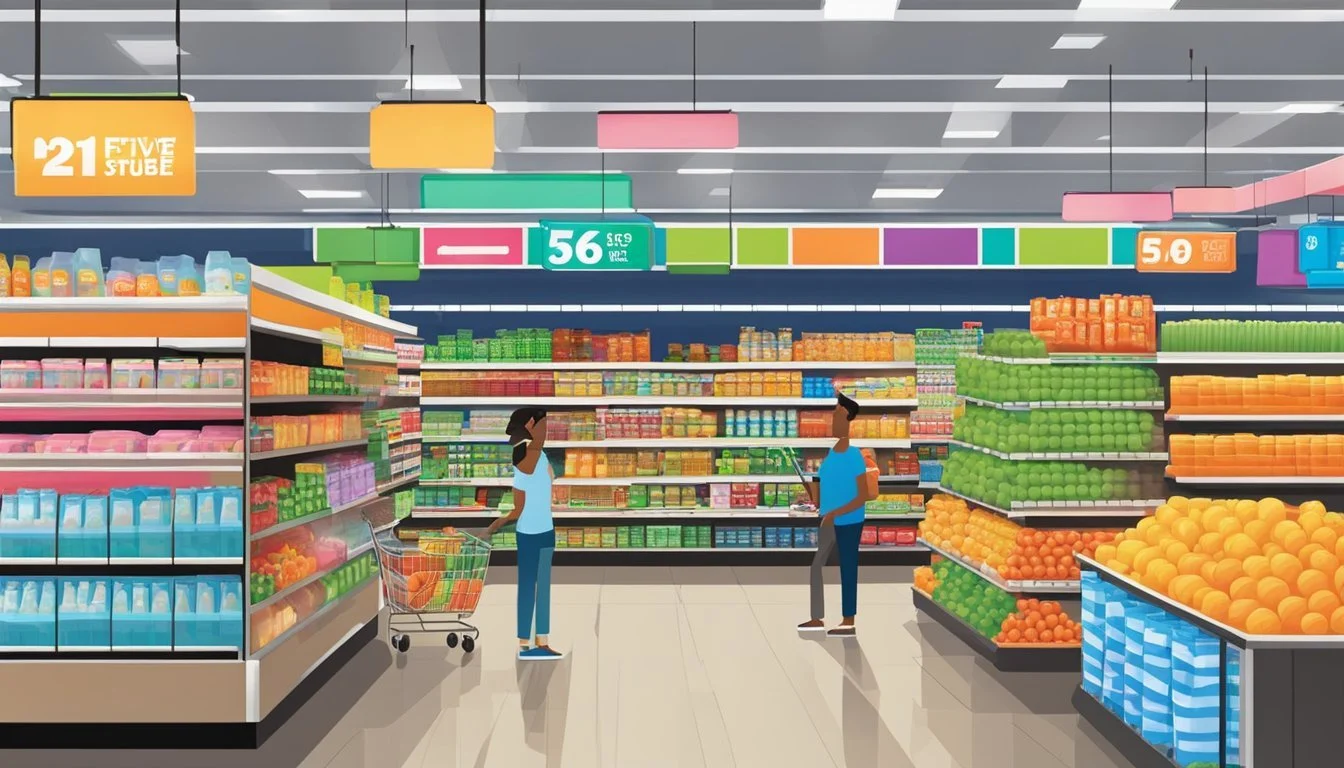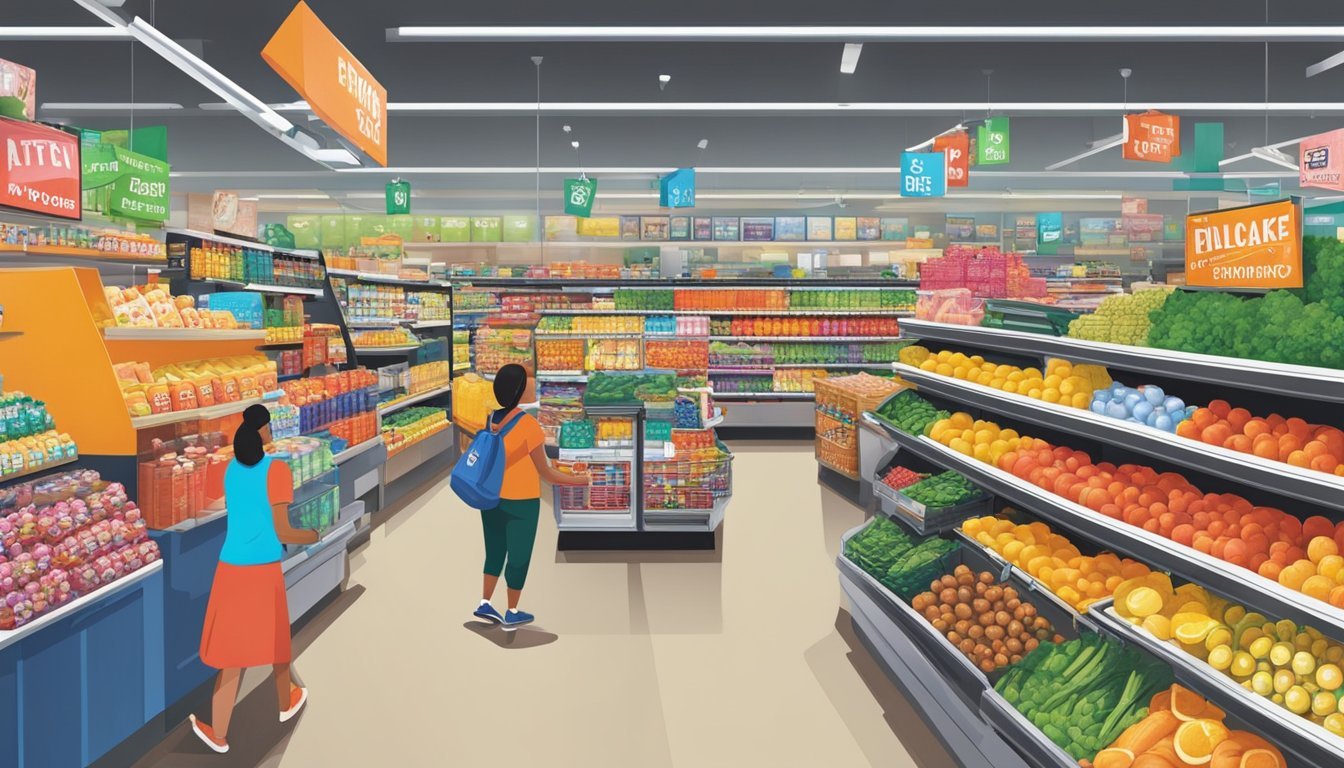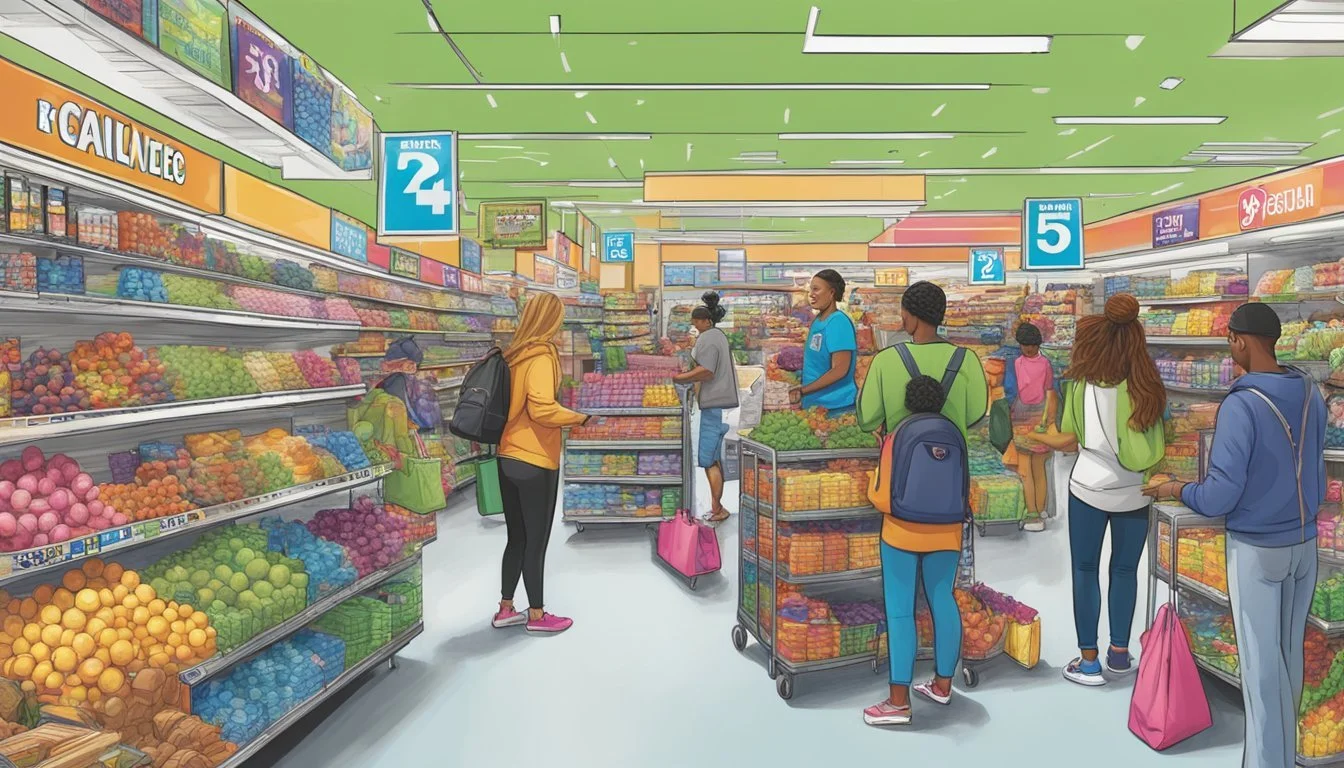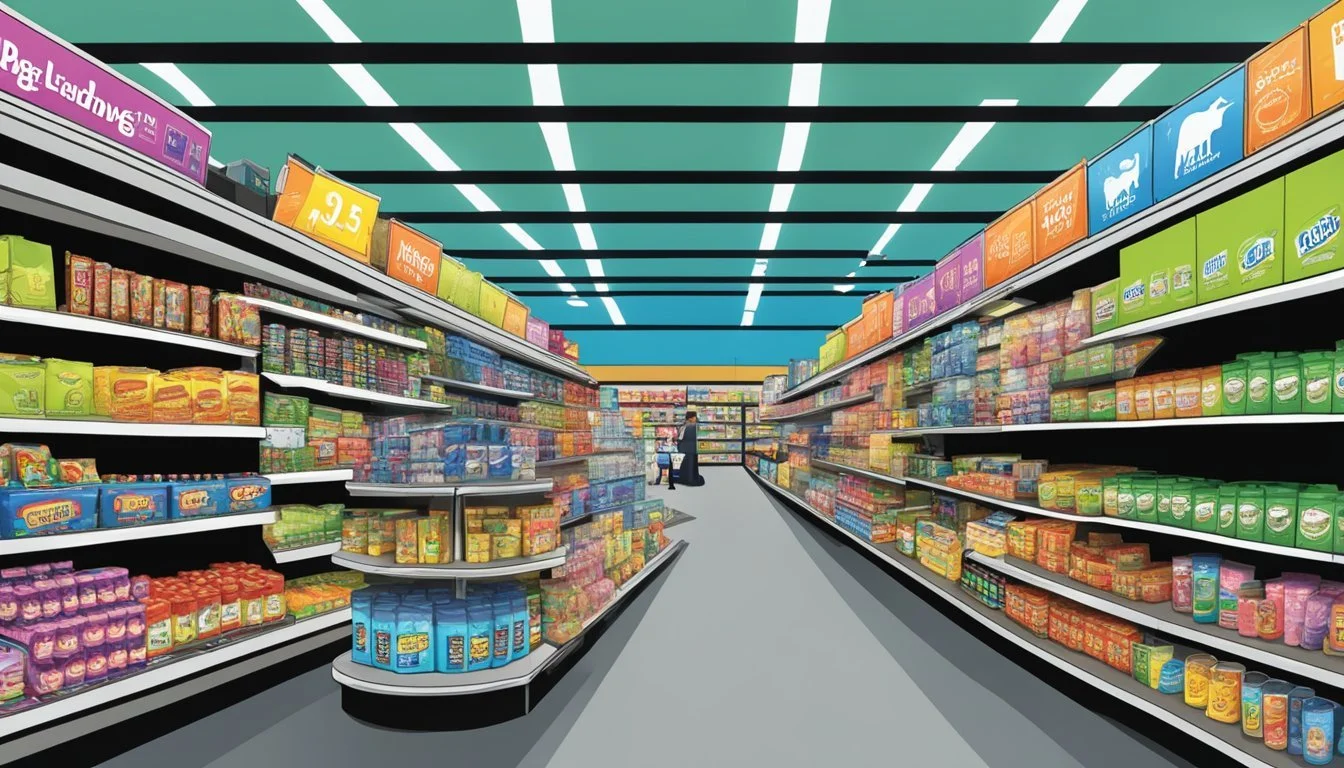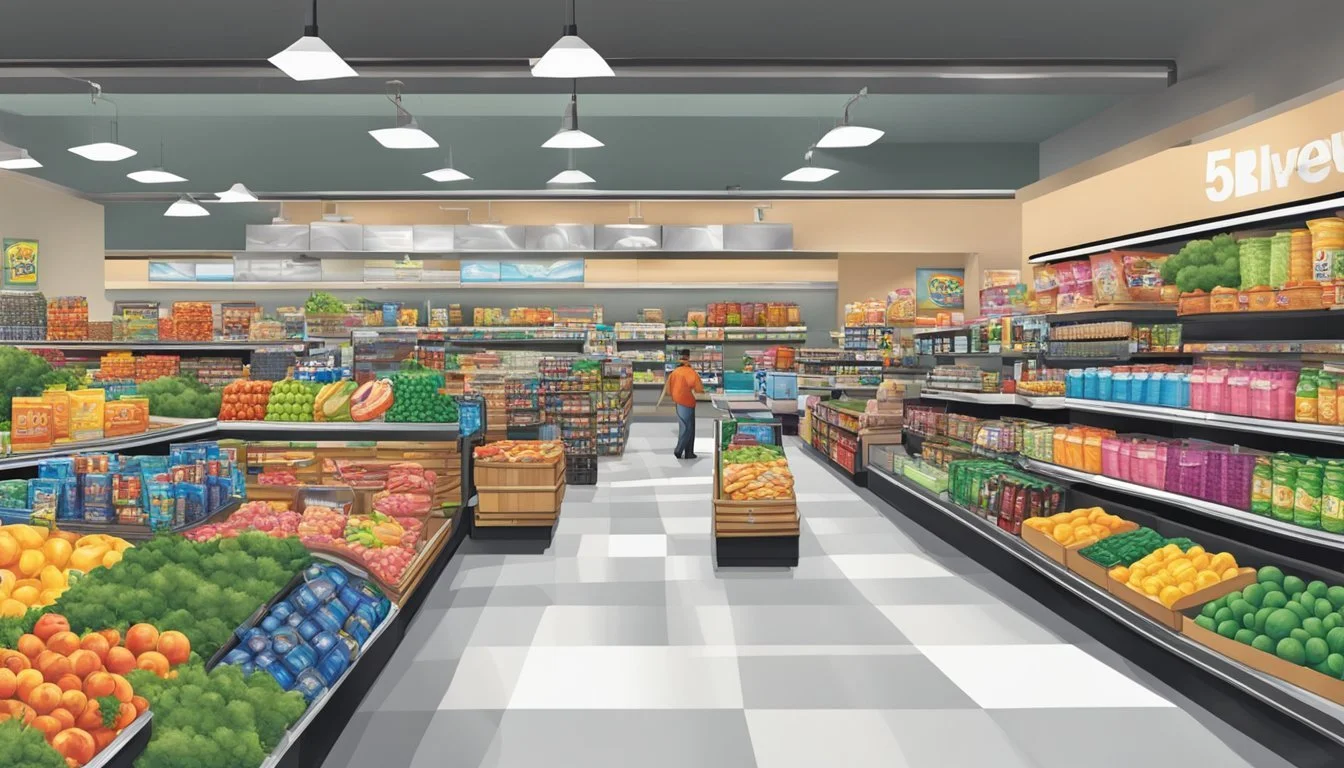Five Below vs Piggly Wiggly
A Comprehensive Comparison of Budget-Friendly Shopping Options
Five Below and Piggly Wiggly represent two distinct retail experiences in the American marketplace. While Five Below is known for its affordable variety of items priced at $5 or less, Piggly Wiggly has a long-standing reputation as a grocery store chain. This comparison might seem unusual at first glance, given their different primary focuses.
Piggly Wiggly stands out as the better choice for comprehensive grocery shopping, offering a wide range of food items and household essentials. The store provides an extensive selection of products, including fresh produce, meats, dairy, and pantry staples. Five Below, on the other hand, excels in offering trendy, low-cost items across various categories but lacks the extensive food options found in a traditional grocery store.
Comparing these two retailers highlights the importance of understanding one's shopping needs. While Five Below can be an excellent destination for budget-friendly finds in categories like home decor, party supplies, and seasonal items, Piggly Wiggly remains the go-to option for those seeking to fill their pantries and refrigerators with a diverse array of grocery products.
History and Evolution of the Stores
Piggly Wiggly and Five Below emerged at different times to meet distinct consumer needs. Their origins and growth trajectories reflect changing retail landscapes and shopping habits.
Piggly Wiggly's Origin
Piggly Wiggly revolutionized grocery shopping in 1916. Clarence Saunders founded the first store in Memphis, Tennessee, introducing the self-service model. This innovative approach allowed customers to select their own items, a radical departure from clerk-served stores of the time.
Saunders patented his self-service concept, which included price-marked products and checkout stands. These features became industry standards. Piggly Wiggly's efficiency and cost-effectiveness led to rapid expansion across the United States.
By the 1920s, Piggly Wiggly had hundreds of locations. The chain's success demonstrated the viability of self-service grocery stores, shaping modern supermarket design.
Five Below's Establishment
Five Below entered the retail scene much later, in 2002. Founded by David Schlessinger and Tom Vellios in Philadelphia, Pennsylvania, the chain targeted the teen and pre-teen market.
The store's concept focused on offering trendy products priced at $5 or less. This approach appealed to young shoppers and budget-conscious consumers alike.
Five Below expanded quickly, opening stores across the United States. By 2018, the company had over 750 locations. Its growth strategy included entering new markets and adapting to changing consumer preferences.
Grocery Industry Over Time
The grocery industry has undergone significant changes since Piggly Wiggly's inception. Self-service became the norm, leading to larger stores and wider product selections.
Supermarkets emerged in the 1930s, combining grocery, meat, and produce departments. The 1950s and 1960s saw the rise of chain stores and suburban shopping centers.
Technology has played a crucial role in recent decades. Barcode scanning, inventory management systems, and self-checkout kiosks have improved efficiency.
Online grocery shopping and delivery services have gained popularity, especially since the 2020 pandemic. These developments continue to shape the industry's evolution.
Store Layout and Shopping Experience
Five Below and Piggly Wiggly offer distinct shopping environments tailored to their product offerings and target customers. Their store layouts and designs reflect different approaches to enhancing the customer experience and showcasing merchandise.
Five Below's Approach to Store Design
Five Below stores feature a vibrant and energetic atmosphere. The layout is typically open and spacious, with wide aisles allowing easy navigation. Bright colors and bold signage guide shoppers through various themed sections.
Products are organized by category, such as tech accessories, beauty items, and novelty gifts. Each section is clearly marked, making it simple for customers to find what they're looking for.
Interactive displays and seasonal merchandise areas create a dynamic shopping experience. The checkout area is often centrally located, with multiple registers to minimize wait times.
Piggly Wiggly's Shopping Experience
Piggly Wiggly stores focus on creating a comfortable, community-oriented environment. The layout is designed for efficient grocery shopping, with a logical flow from produce to packaged goods to frozen foods.
Wide aisles accommodate shopping carts and provide easy access to shelves. Clear signage helps customers locate specific departments and product categories.
Many Piggly Wiggly locations offer personalized services like custom meat cuts and local produce sections. The deli and bakery areas often feature prepared foods and freshly baked goods.
Checkout lanes are typically situated at the front of the store, with options for both full-service and self-checkout to cater to different customer preferences.
Locations and Accessibility
Piggly Wiggly and Five Below have distinct geographical footprints across the United States. Their store locations and accessibility differ significantly, impacting customer convenience and shopping options.
Piggly Wiggly in the Southern United States
Piggly Wiggly operates primarily in the Southern United States. The chain has a strong presence in states like Alabama, Georgia, and South Carolina. Its stores are often found in smaller towns and rural areas.
Memphis, Tennessee holds special significance as the birthplace of Piggly Wiggly in 1916. The company maintains a connection to its Southern roots, with many locations in the region.
Piggly Wiggly's focus on the South means limited accessibility for shoppers in other parts of the country. This regional concentration allows the chain to cater to local tastes and preferences.
Five Below's Nationwide Presence
Five Below has expanded rapidly across the United States. The discount retailer operates over 1,000 stores in 40 states. Its locations are typically found in suburban areas and shopping centers.
Unlike Piggly Wiggly, Five Below has a strong presence in the Midwest and other regions beyond the South. This wide distribution makes Five Below accessible to a larger portion of the U.S. population.
Five Below's strategy involves opening multiple stores in metropolitan areas. This approach increases convenience for urban and suburban shoppers. The chain's broad geographical reach contrasts sharply with Piggly Wiggly's more localized presence.
Product Selection and Quality
Piggly Wiggly and Five Below offer distinct product ranges to cater to different consumer needs. Piggly Wiggly focuses on groceries and household essentials, while Five Below specializes in affordable merchandise across various categories.
Variety and Exclusive Products at Piggly Wiggly
Piggly Wiggly provides a comprehensive grocery selection. Their stores stock a wide range of fresh produce, meats, dairy products, and pantry staples. Customers can find both national brands and Piggly Wiggly's own store brand items.
The store's meat department is known for its quality cuts and variety. Piggly Wiggly also offers a deli section with prepared foods and a bakery featuring fresh bread and pastries.
Canned goods, frozen foods, and household cleaning supplies are readily available. Some Piggly Wiggly locations have expanded their organic and natural food options to meet growing consumer demand.
Assortment at Five Below
Five Below's product selection differs significantly from traditional grocery stores. The retailer specializes in merchandise priced at $5 or less, with some items up to $10.
Their inventory includes a mix of trendy and practical items across various categories. Customers can find snacks, candy, and beverages, but the selection is limited compared to full-service grocery stores.
Five Below's strength lies in non-food items such as toys, games, tech accessories, beauty products, and seasonal decorations. The store frequently rotates its inventory to introduce new and trending products.
Quality Assessment
Product quality varies between the two retailers due to their different focuses. Piggly Wiggly maintains consistent quality standards for its groceries, particularly in fresh produce and meats.
The store's commitment to quality is evident in its produce section, where fruits and vegetables are regularly inspected and rotated. Piggly Wiggly's store brand products often match the quality of national brands at lower prices.
Five Below's products are designed to be affordable, which can impact quality. While many items offer good value for their price, they may not match the durability or performance of higher-end alternatives.
For non-perishable goods and trendy items, Five Below provides acceptable quality for the price point. However, for essential groceries and fresh foods, Piggly Wiggly offers superior quality and selection.
Pricing and Deals
Five Below and Piggly Wiggly employ distinct pricing strategies to attract customers. Their approaches to discounts, coupons, and special offers vary significantly, impacting shoppers' budgets and overall satisfaction.
Competitive Pricing Strategies
Five Below maintains a consistent $5-and-below price point for most items. This straightforward approach appeals to budget-conscious shoppers seeking affordable non-grocery products. Piggly Wiggly, as a grocery store, adopts a more traditional pricing model. They offer a mix of national brands and store-brand alternatives at various price points.
Piggly Wiggly's prices typically fall between those of discount chains like Aldi and larger supermarkets such as Kroger or Publix. Their focus on local markets allows for some regional price adjustments.
Discounts and Special Offers
Five Below rarely offers additional discounts due to their already low price point. Their main promotions revolve around new product launches or seasonal items. Piggly Wiggly, conversely, provides a wider range of discounts and special offers.
Piggly Wiggly features weekly sales on various grocery items. These often include buy-one-get-one deals, percentage discounts, and bulk purchase savings. The store also runs seasonal promotions and holiday-themed sales events.
Many Piggly Wiggly locations offer senior citizen discounts on specific days of the week. This appeals to older shoppers on fixed incomes.
Coupons Usage and Savings
Five Below does not typically accept manufacturer coupons. Their low-price model eliminates the need for additional discounts. Piggly Wiggly, however, embraces coupon usage as part of their pricing strategy.
Piggly Wiggly accepts both manufacturer and store coupons. They often allow coupon stacking, enabling customers to combine multiple discounts on a single item. Some locations offer double coupon days, doubling the face value of manufacturer coupons up to a certain amount.
The store's digital app provides access to additional coupons and personalized deals based on shopping history. This technology-driven approach appeals to tech-savvy shoppers looking to maximize savings.
Comparison with Major Grocers
Five Below's pricing model sets it apart from traditional grocers. Its $5-and-below concept cannot be directly compared to full-service supermarkets. Piggly Wiggly, however, competes more directly with major grocery chains.
Compared to Walmart, Piggly Wiggly often has slightly higher base prices on national brands. However, Piggly Wiggly's store brands and local product offerings can be competitively priced. Against Publix, Piggly Wiggly generally offers lower prices but may have a smaller selection of premium or specialty items.
Aldi typically undercuts Piggly Wiggly on price for comparable items. However, Piggly Wiggly offers a broader range of national brands and fresh produce. Kroger and Piggly Wiggly tend to have similar pricing structures, with regional variations depending on local competition.
Customer Service Approach
Customer service plays a crucial role in shaping the shopping experience at both Five Below and Piggly Wiggly. These retailers employ distinct strategies to meet customer needs and ensure satisfaction.
Client Relations at Piggly Wiggly
Piggly Wiggly emphasizes personalized service in its customer approach. Store associates are trained to greet shoppers warmly and assist with product locations. The chain's smaller stores allow for more one-on-one interactions between staff and customers.
Piggly Wiggly provides traditional shopping baskets and carts for customer convenience. Checkout lines are typically shorter due to the store's size, reducing wait times. Many locations offer carryout services to help customers with their groceries.
The company values customer feedback and often implements suggestions to improve the shopping experience. This responsive approach helps build loyalty among regular shoppers.
Five Below's Customer Service Model
Five Below adopts a self-service model with minimal staff intervention. The store layout is designed for easy navigation, allowing customers to browse independently. Employees are available to answer questions but generally maintain a hands-off approach.
The retailer uses colorful signage and organized displays to guide shoppers. Checkout lines can be longer during peak times due to the high volume of low-priced items purchased.
Five Below focuses on efficiency in transactions. The company offers a straightforward return policy and trains staff to handle exchanges quickly. Customer satisfaction is measured through post-purchase surveys and social media engagement.
Brand Perception and Community Engagement
Piggly Wiggly and Five Below have distinct approaches to brand perception and community engagement. Their strategies reflect their unique market positions and target demographics.
Piggly Wiggly's Community Involvement
Piggly Wiggly has built a strong reputation for community involvement. The grocery chain often sponsors local events and supports charitable causes in the areas where its stores operate.
Piggly Wiggly's branded merchandise, featuring its iconic pig logo, has become popular among customers. This merchandise includes t-shirts, caps, and collectibles, fostering brand loyalty.
The store's commitment to offering regional products and supporting local suppliers enhances its image as a community-focused retailer. This approach has helped Piggly Wiggly maintain customer loyalty in competitive markets.
Five Below's Market Position
Five Below has cultivated a brand perception centered on affordability and trendy products. The store targets younger consumers and bargain hunters with its $5-and-under pricing model.
The company's marketing strategy emphasizes fun and discovery, encouraging customers to explore their constantly changing inventory. This approach has helped Five Below create a unique shopping experience.
Five Below's brand is associated with impulse purchases and seasonal items. The store's ability to quickly adapt to trends has contributed to its growing popularity among teenagers and young adults.
While not traditionally focused on grocery items, Five Below has expanded its food and beverage offerings in recent years. This move has positioned the company as a potential competitor in the snack and convenience food market.
Innovations and Technological Advancements
Five Below and Piggly Wiggly have taken different approaches to technological innovation in their stores. Five Below has embraced modern retail technologies to enhance the shopping experience.
The discount chain utilizes digital price tags and self-checkout kiosks in many locations. These innovations streamline operations and reduce wait times for customers.
Piggly Wiggly, as the pioneer of the self-service grocery model, laid the groundwork for modern supermarkets. However, its technological advancements have been more gradual in recent years.
Some Piggly Wiggly stores have implemented digital coupon programs, allowing customers to save money through their smartphones. This feature appeals to tech-savvy shoppers looking for discounts.
Five Below's larger scale has enabled faster adoption of new technologies across its network. The company's centralized management structure facilitates uniform implementation of innovations.
Piggly Wiggly's franchise model can lead to variations in technological offerings between stores. Some locations may have more advanced systems than others, depending on individual franchisee decisions.
Both retailers continue to explore ways to improve efficiency and customer experience through technology. The pace and extent of these advancements may influence shopper preferences in the future.
Overall Comparison and Final Thoughts
Five Below and Piggly Wiggly cater to different shopping needs. Five Below focuses on trendy, low-cost items across various categories, while Piggly Wiggly specializes in groceries.
Piggly Wiggly offers a wider selection of food products, including fresh produce, meats, and pantry staples. Their stores are designed for efficient grocery shopping with clearly organized aisles.
Five Below excels in providing discounted non-food items like toys, accessories, and home decor. Their store layout is often more colorful and engaging, appealing to younger shoppers.
Pricing strategies differ between the two:
Piggly Wiggly: Competitive grocery prices, weekly sales
Five Below: Fixed $5 or less price point on most items
Customer service experiences may vary by location for both chains. Piggly Wiggly often maintains a local, community-oriented approach.
Locations play a role in accessibility:
Piggly Wiggly: Primarily found in southern and midwestern states
Five Below: More widespread across the United States
For comprehensive grocery shopping, Piggly Wiggly is the better choice. Five Below serves as a destination for affordable non-essential items and gifts.
The preferred store depends on individual shopping needs and priorities. Piggly Wiggly meets daily food requirements, while Five Below offers budget-friendly variety for occasional purchases.

